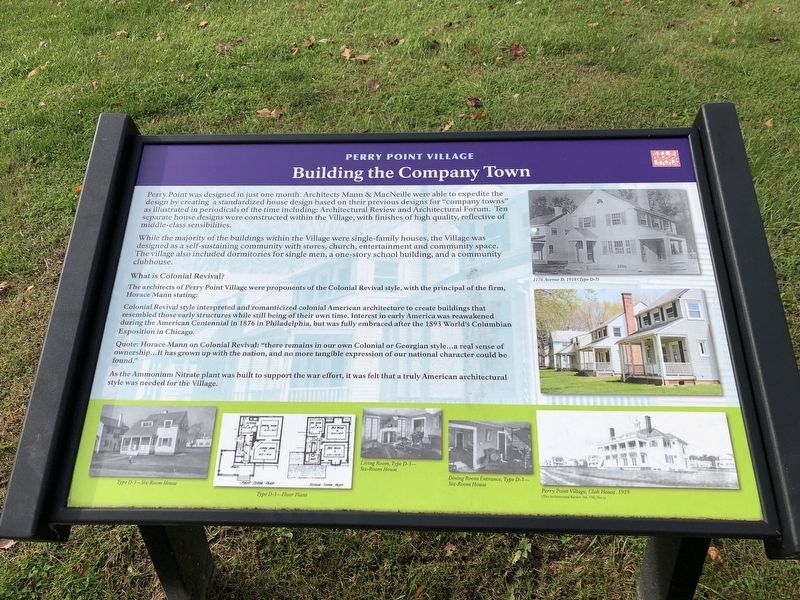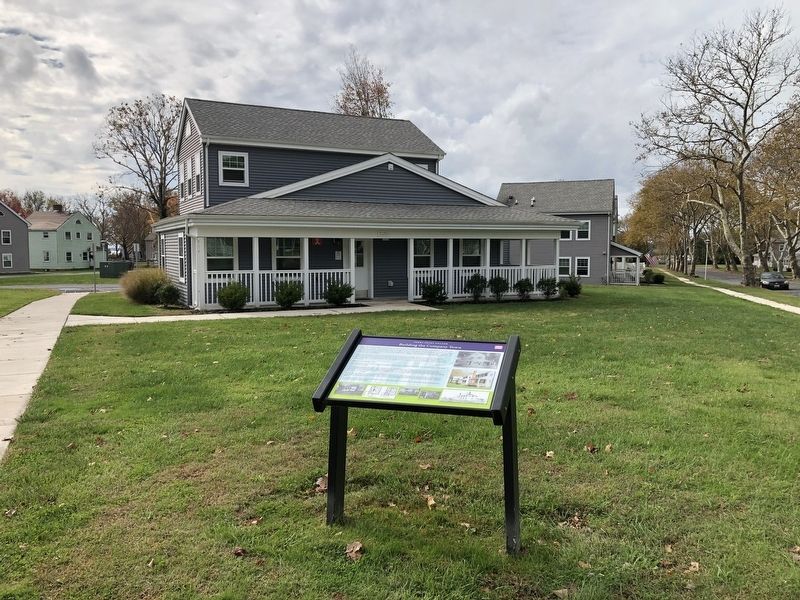Perry Point in Cecil County, Maryland — The American Northeast (Mid-Atlantic)
Building the Company Town
Perry Point Village
Perry Point was designed in just one month. Architects Mann & MacNeille were able to expedite the design by creating a standardized house design based on their previous designs for "company towns" as illustrated in periodicals of the time including: Architectural Review and Architectural Forum. Ten separate house designs were constructed within the Village, with finishes of high quality, reflective of middle-class sensibilities.
While the majority of the buildings within the Village were single-family houses, the Village was designed as a self-sustaining community with stores, church, entertainment and community space. The village also included dormitories for single men, a one-story school building, and a community clubhouse.
What is Colonial Revival?
The architects of Perry Point village were proponents of the Colonial Revival style, with the principal of the firm, Horace Mann stating:
Colonial Revival style interpreted and romanticized colonial American architecture to create buildings that resembled those early structures while still being of their own time. Interest in early America was reawakened during the American Centennial in 1876 in Philadelphia, but was fully embraced after the 1893 World's Columbian Exposition in Chicago.
Quote: Horace Mann on Colonial Revival: "there remains in our own Colonial or Georgian style…a real sense of ownership…It has grown up with the nation, and no more tangible expression of our national character could be found."
As the Ammonium Nitrate plant was built to support the war effort, it was felt that a truly American architectural style was needed for the Village.
Topics. This historical marker is listed in these topic lists: Architecture • Settlements & Settlers • War, World I. A significant historical year for this entry is 1876.
Location. 39° 33.25′ N, 76° 4.302′ W. Marker is in Perry Point, Maryland, in Cecil County. Marker is at the intersection of Avenue D and 3rd Street, on the right when traveling south on Avenue D. Touch for map. Marker is at or near this postal address: 1088 Ave D, Perry Point MD 21902, United States of America. Touch for directions.
Other nearby markers. At least 8 other markers are within walking distance of this marker. A New Town along the Susquehanna (within shouting distance of this marker); The War Effort at Home: Perry Point Ammonium Nitrate Plant (about 700 feet away, measured in a direct line); Grist Mill (approx. 0.3 miles away); Count de Rochambeau’s Troops (approx. 0.4 miles away); Revered Son (approx. 0.4 miles away); Perryville (approx. 0.4 miles away); Historic Rodgers Tavern (approx. 0.4 miles away); Rodgers Tavern (approx. 0.4 miles away). Touch for a list and map of all markers in Perry Point.
Credits. This page was last revised on October 31, 2021. It was originally submitted on October 31, 2021, by Devry Becker Jones of Washington, District of Columbia. This page has been viewed 121 times since then and 8 times this year. Photos: 1, 2. submitted on October 31, 2021, by Devry Becker Jones of Washington, District of Columbia.

